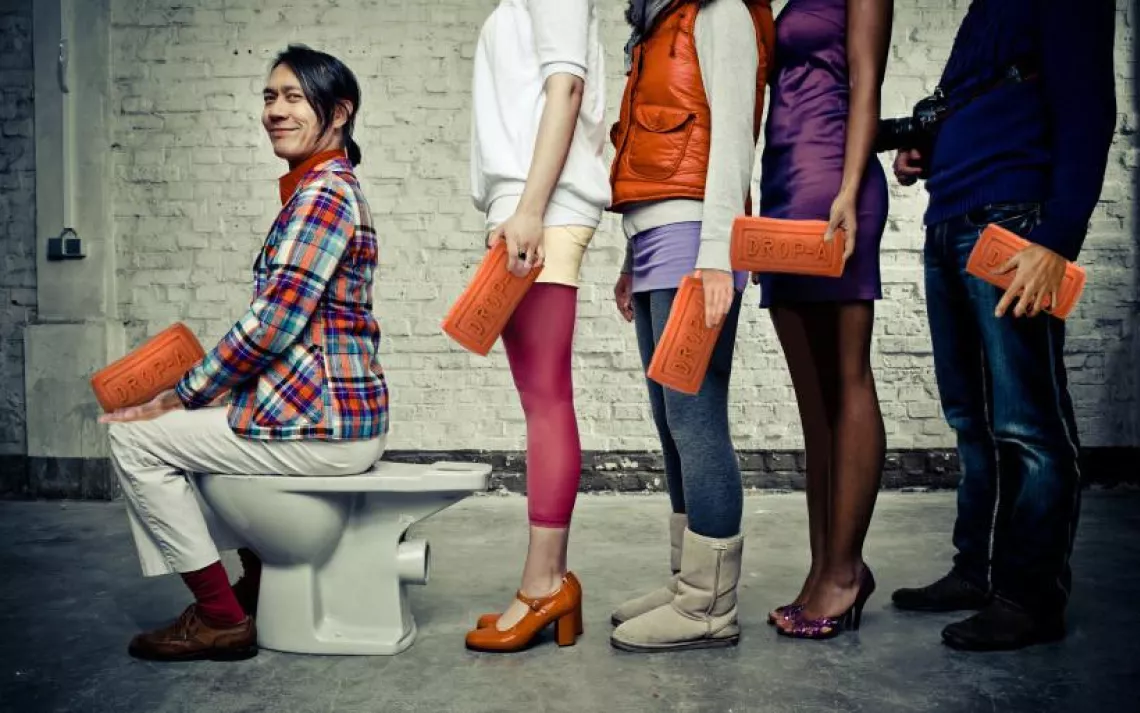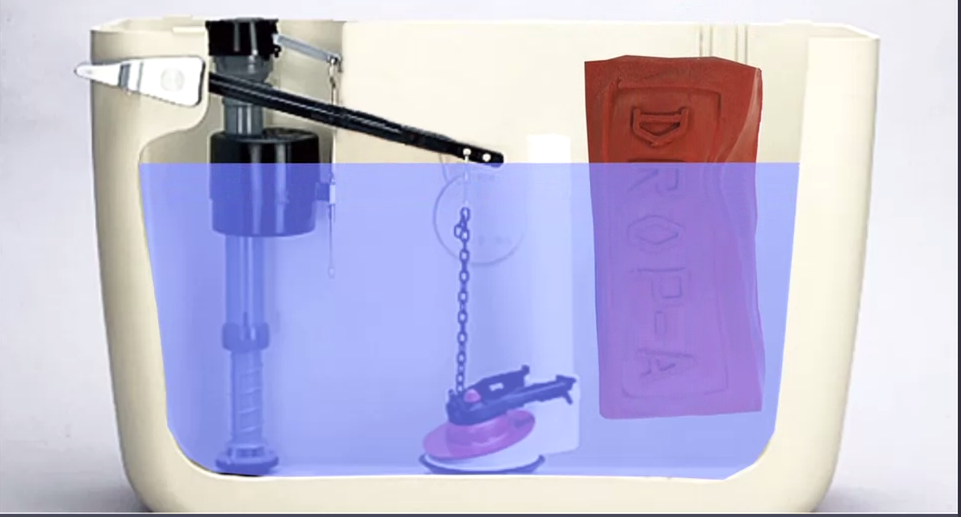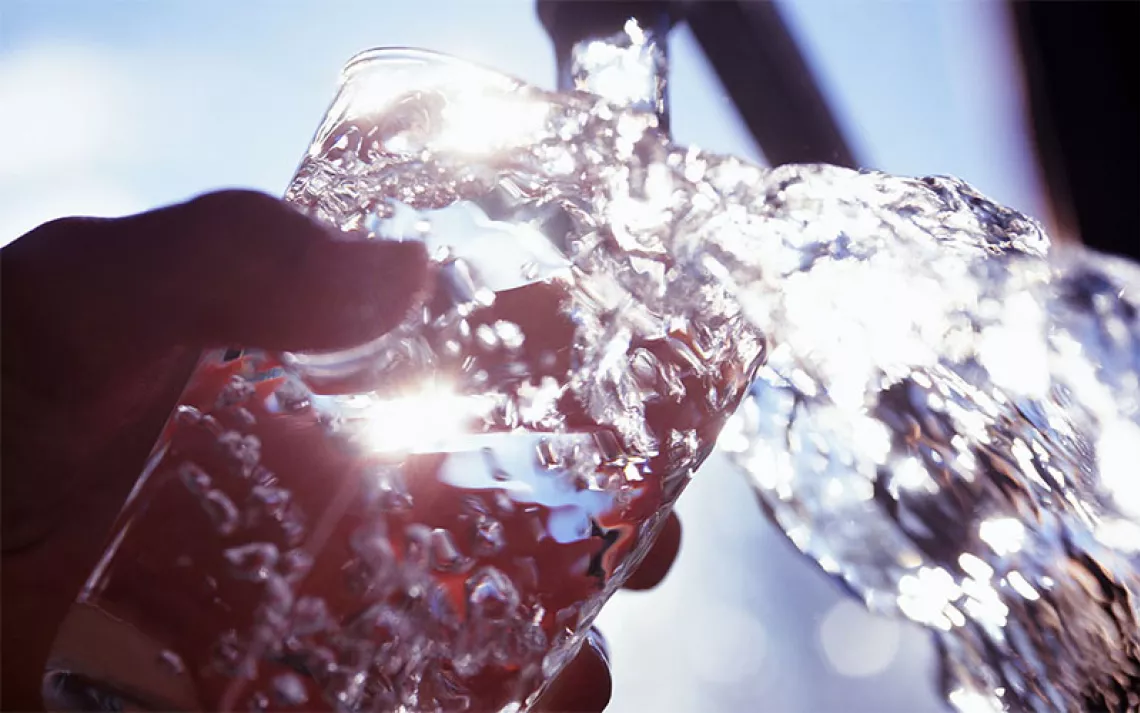Dropping a Brick in Your Toilet Has Never Felt so Good
Drop-A-Brick in your toilet and save half a gallon of water with each flush.

Photo by Project Drop-A-Brick.
Most of us are repeat offenders when it comes to excessive toilet flushing -- whether it's a "mercy flush" or a case of not-letting-it-mellow-if-it's-yellow. Whatever the reason, it's probably why the US Environmental Protection Agency reports that Americans use more water each day by flushing the toilet than any other activity -- even showering!
Even if you are a responsible flusher like Cameron Diaz, each flush--however infrequent--is inherently wasteful. In drought-plagued California, approximately 203 million gallons of drinking water (yes, drinking water) are wasted by toilets per day. Precious drinking water is squandered while 400 homes in East Porterville have gone dry.
OK, not all of us can afford a low-flow or dual-flush toilet, let alone get our landlords to acknowledge the emails we sent about installing one, but does that mean we are doomed to a sasquatch-size water-footprint?
No -- thanks to the impish founders of Project Drop-A-Brick. As the name suggests, all you have to do is Drop-A-Brick in your toilet tank and you will feel 50-gallons-less-guilty each week following. Sure, you could put a rock or something in your tank too, but that is not what the water conservation project is about: “We wanted Drop-A-Brick to be a model of sustainable design,” Greg Hadden, co-founder of Drop-A-Brick, told Sierra. “It’s made of eco-friendly materials and there’s no water used in the manufacturing process.”
As it turns out, Dropping-A-Brick in your toilet feels even better during drought.
Why do you think it’s difficult to get people to take responsibility for water conservation in their own home?
A small fraction of businesses consume the majority of water in California, and I can see how that imbalance would discourage people from thinking they can make a difference. It’s like, “Why should I use less water when I’m not the problem?” For me, it’s just a matter of respect for a limited resource. It’s everyone’s responsibility to conserve it.
I like that Drop-A-Brick doesn’t use guilt as a motivator.
Instead we use potty humor. Drop-A-Brick is about bringing water conservation awareness to a wider audience; it’s an extension of our communication program really.
Is the concept of putting a brick in a toilet to save water a real thing?
Oh yeah, absolutely! People used to do it all the time. It’s effective in the short-term, but it doesn’t take long for a real brick to dissolve and cause leaks. We want to save water, not kill your toilet.
How is Drop-A-Brick different than a real brick?
It’s made of natural rubber and this cool stuff called hydro-gel, which was originally designed to hold moisture in arid soil. Once you add water, it expands into a dense gel.

Image by Project Drop-A-Brick.
Why is using Drop-A-Brick in your toilet tank more effective than a jug filled with water or a real brick in a Ziploc bag?
Drop-A-Brick displaces a specifically calculated volume of water. We did a ton of testing to figure out the maximum amount of water we could displace without causing clogs (which would waste more water with the extra flushes). Plus a regular brick or jug just wouldn’t fit in most tanks. Even if they could, the flushing mechanisms are too delicate. Drop-A-Brick squeezes around this stuff because it’s soft and pliable. And it’ll last 10 years in your tank.
Is the older, less tech-savvy crowd excluded from Drop-A-Brick’s message, which is mostly marketed on social media?
Not at all. The older crowd lived through the drought in the '70s and '80s so they’ll tell us, “Yeah, we used the actual brick in our toilet.” It’s the young people we need to explain the concept to. We were amazed at how low drought awareness in California was. Drop-A-Brick turned out to be a great way to reach out to new groups of people.

Make every day an Earth Day
Get articles like this one sent directly to your inbox.
With this action you affirm you want to receive Sierra Club communications and may vote on policy designated by the Sierra Club Board.
---
You can get your own Drop-A-Brick here for only $15, and donate an additional one to a needy household for only $12. If you're still not convinced, check out Drop-A-Brick's campaign video. We dare you not to laugh:
Follow Sierra on Facebook, Twitter, Pinterest and YouTube.
 The Magazine of The Sierra Club
The Magazine of The Sierra Club



